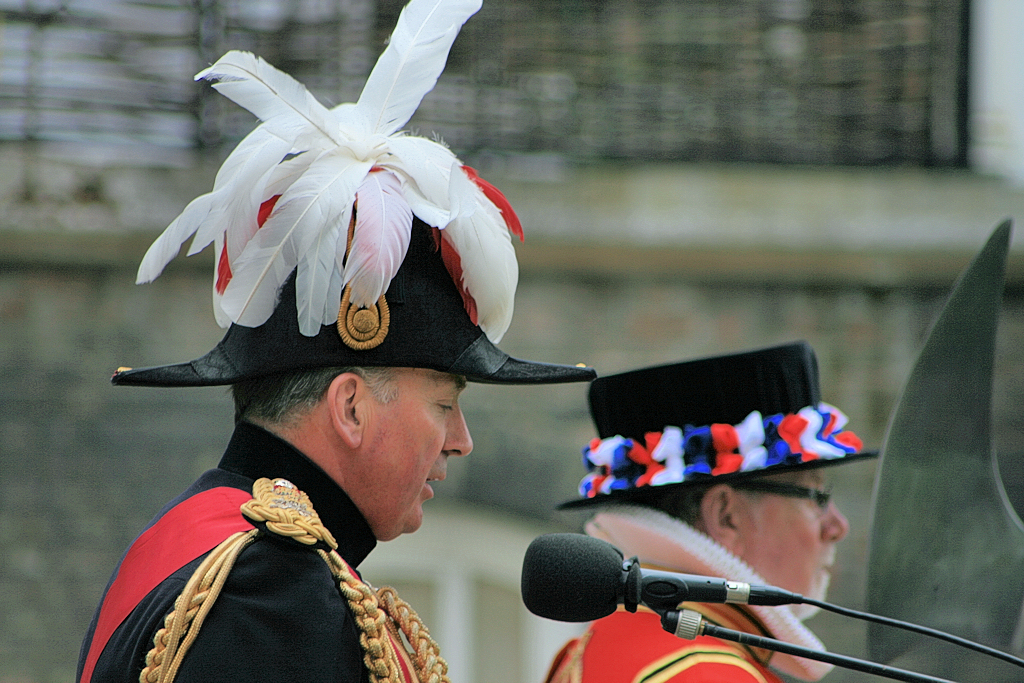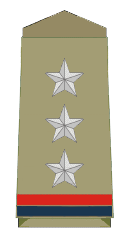|
Inverness-shire Constabulary
The Inverness-shire Constabulary, also called the Inverness County Police, was the police force of the county of Inverness-shire in Scotland. The force was established in 1840. On 16 November 1968 the Constabulary merged with Inverness Burgh Police to form Inverness Constabulary, which in turn became part of the Northern Constabulary in 1975, which was in turn succeeded by Police Scotland in 2013. Organisation The county was divided into four divisions, which would remain the same for 128 years: *Inverness * Lochaber (headquarters in Fort William) *Skye *Long Island, covering all the islands in the Outer Hebrides ( North Uist, South Uist, Benbecula, Barra, and Harris) except Lewis, which was within Ross-shire The force was originally commanded by a Superintendent, who also headed the Inverness Division. The other divisions were commanded by Sub Inspectors. These officers were renamed the Chief Constable and Inspectors respectively in 1857. There were original ... [...More Info...] [...Related Items...] OR: [Wikipedia] [Google] [Baidu] |
Inverness-shire Constabulary Mountain Rescue Off-road Vehicle
Inverness-shire ( gd, Siorrachd Inbhir Nis) is a Counties of Scotland, historic county, registration county and Lieutenancy areas of Scotland, lieutenancy area of Scotland. Covering much of the Scottish Highlands, Highlands and Outer Hebrides, it is Scotland's largest county, though one of the smallest in population, with 67,733 people or 1.34% of the Scottish population. Definition The extent of the lieutenancy area was defined in 1975 as covering the local government areas of Scotland 1973 to 1996, districts of Inverness, Badenoch and Strathspey (local government district, Highland region), Badenoch & Strathspey, and Lochaber (local government district, Highland region), Lochaber. Thus it differs from the county in that it includes parts of what were once County of Moray, Moray and Argyll, but does not include any of the Outer Hebrides which were given their own lieutenancy area — the Western Isles. Geography Inverness-shire is Scotland's largest county, and the second la ... [...More Info...] [...Related Items...] OR: [Wikipedia] [Google] [Baidu] |
Benbecula
Benbecula (; gd, Beinn nam Fadhla or ) is an island of the Outer Hebrides in the Atlantic Ocean off the west coast of Scotland. In the 2011 census, it had a resident population of 1,283 with a sizable percentage of Roman Catholics. It is in a zone administered by or the Western Isles Council. The island is about from west to east and a similar distance from north to south. It lies between the islands of North Uist and South Uist and is connected to both by road causeways. Benbecula's main settlement and administrative centre is Balivanich (Scottish Gaelic: ''Baile a' Mhanaich'', meaning "Town of the Monk"). In 1746, Bonnie Prince Charlie was caught in a storm and forced to land on Benbecula. The population of Benbecula were sympathetic to the Jacobite cause, and smuggled him off the island to safety, as the song has it: "over the sea to Skye". In 2006, local residents took control of parts of the island in a community buy-out. The previous landowners, a sporting syndicat ... [...More Info...] [...Related Items...] OR: [Wikipedia] [Google] [Baidu] |
Organisations Based In Inverness
An organization or organisation (Commonwealth English; see spelling differences), is an entity—such as a company, an institution, or an association—comprising one or more people and having a particular purpose. The word is derived from the Greek word ''organon'', which means tool or instrument, musical instrument, and organ. Types There are a variety of legal types of organizations, including corporations, governments, non-governmental organizations, political organizations, international organizations, armed forces, charities, not-for-profit corporations, partnerships, cooperatives, and educational institutions, etc. A hybrid organization is a body that operates in both the public sector and the private sector simultaneously, fulfilling public duties and developing commercial market activities. A voluntary association is an organization consisting of volunteers. Such organizations may be able to operate without legal formalities, depending on jurisdiction, includ ... [...More Info...] [...Related Items...] OR: [Wikipedia] [Google] [Baidu] |
Enclave And Exclave
An enclave is a territory (or a small territory apart of a larger one) that is entirely surrounded by the territory of one other state or entity. Enclaves may also exist within territorial waters. ''Enclave'' is sometimes used improperly to denote a territory that is only partly surrounded by another state. The Vatican City and San Marino, both enclaved by Italy, and Lesotho, enclaved by South Africa, are completely enclaved sovereign states. An exclave is a portion of a state or district geographically separated from the main part by surrounding alien territory (of one or more states or districts etc). Many exclaves are also enclaves, but not all: an exclave can be surrounded by the territory of more than one state. The Azerbaijani exclave of Nakhchivan is an example of an exclave that is not an enclave, as it borders Armenia, Turkey and Iran. Semi-enclaves and semi-exclaves are areas that, except for possessing an unsurrounded sea border (a coastline contiguous with internati ... [...More Info...] [...Related Items...] OR: [Wikipedia] [Google] [Baidu] |
Inverness Castle
Inverness Castle ( gd, Caisteal Inbhir Nis) sits on a cliff overlooking the River Ness in Inverness, Scotland. A succession of castles have stood on this site since 1057, although the present structure dates from 1836. The present structure is a Category A listed building. History Medieval history A succession of castles have stood on this site since 1057. The castle is said to have been built by Malcolm III of Scotland (Máel Coluim mac Donnchada). The first Inverness Castle was partially destroyed by King Robert I of Scotland in 1307 who razed its battlements to the ground. In 1428, James I, in his effort to bring the Highlanders to heel, summoned fifty clan chiefs to a parley at Inverness Castle. However, "where the Parliament was at the time sitting, they were one by one by order of the King arrested, ironed, and imprisoned in different apartments and debarred from having any communications with each other or with their followers." Several chiefs were executed on the spot ... [...More Info...] [...Related Items...] OR: [Wikipedia] [Google] [Baidu] |
Royal Burgh
A royal burgh () was a type of Scottish burgh which had been founded by, or subsequently granted, a royal charter. Although abolished by law in 1975, the term is still used by many former royal burghs. Most royal burghs were either created by the Crown, or upgraded from another status, such as burgh of barony. As discrete classes of burgh emerged, the royal burghs—originally distinctive because they were on royal lands—acquired a monopoly of foreign trade. An important document for each burgh was its burgh charter, creating the burgh or confirming the rights of the burgh as laid down (perhaps verbally) by a previous monarch. Each royal burgh (with the exception of four 'inactive burghs') was represented in the Parliament of Scotland and could appoint bailies with wide powers in civil and criminal justice.George S Pryde, ''The Burghs of Scotland: A Critical List'', Oxford, 1965. The four inactive burghs were Auchtermuchty, Earlsferry, Falkland and Newburgh By 1707 ther ... [...More Info...] [...Related Items...] OR: [Wikipedia] [Google] [Baidu] |
Constable
A constable is a person holding a particular office, most commonly in criminal law enforcement. The office of constable can vary significantly in different jurisdictions. A constable is commonly the rank of an officer within the police. Other people may be granted powers of a constable without holding this title. Etymology Historically, the title comes from the Latin '' comes stabuli'' (attendant to the stables, literally ''count of the stable'') and originated from the Roman Empire; originally, the constable was the officer responsible for keeping the horses of a lord or monarch.p103, Bruce, Alistair, ''Keepers of the Kingdom'' (Cassell, 2002), Constable Encyclopædia Britannica online The title was imported to the monarchies of |
Inspector
Inspector, also police inspector or inspector of police, is a police rank. The rank or position varies in seniority depending on the organization that uses it. Australia In Australian police forces, the rank of inspector is generally the next senior rank from senior sergeant and is less senior than a superintendent (in the cases of the Queensland Police and Western Australia Police) in the other Australian police forces. Members holding the rank usually wear an epaulette featuring three silver pips, the same rank badge as a captain in the army. In addition to the general rank of inspector, some police forces use other ranks such as detective inspector and district inspector. Austria In Austria a similar scheme was used as in Germany. At some point the police inspector was completely removed from the list of service ranks. The current police service has an inspectors service track with ''Inspektor'' being the entry level – it is followed by ''Revierinspektor'' (pre ... [...More Info...] [...Related Items...] OR: [Wikipedia] [Google] [Baidu] |
Sub Inspector
Sub-inspector (SI), or sub-inspector of police, is a rank used extensively in South Asia: in the police forces of Bangladesh, Pakistan, India, and Sri Lanka, which is primarily based on the British model. It was formerly used in most British colonial police forces and in certain British police forces as well. The rank usually was in charge of a police substation or assisted an inspector. United Kingdom The rank of sub-inspector was introduced into the Metropolitan Police in the late 19th century. It did not last long, being effectively replaced by station sergeant in 1890. Officers who already held the rank retained it, and were promoted to inspector as soon as a vacancy arose. In the Metropolitan Police, a rank wearing one star was formerly officially known as a "station inspector" to distinguish it from the more senior rank of sub-divisional inspector that was abolished in 1949. Canada The Royal Canadian Mounted Police rank of sub-inspector was introduced in 1942 with ... [...More Info...] [...Related Items...] OR: [Wikipedia] [Google] [Baidu] |
Superintendent (police)
Superintendent (Supt) is a rank in the British police and in most English-speaking Commonwealth nations. In many Commonwealth countries, the full version is superintendent of police (SP). The rank is also used in most British Overseas Territories and in many former British colonies. In some countries, such as Italy, the rank of superintendent is a low rank. Rank insignia of superintendent File:Bangladesh Police SP Rank.svg, File:IT-PS-Sovr.gif, File:SP pakistan 1.png, File:Distintivo Superintendente PSP.png, File:SPF-SO-SUPT.svg, File:Swedish-police-rank-04.svg, File:Supt.svg, United Kingdom Police File:AFPSPR.png, Australian Federal Police File:RCMP Superintendent.png, Canadian Police File:Garda Superintendent.png, Irish Garda Síochána File:경정.svg, South Korean Police File:Superintendent of Police.png, Indian Police Superintendent in several countries Australia In Australia, the rank of superintendent is the next senior rank from chief Inspector and i ... [...More Info...] [...Related Items...] OR: [Wikipedia] [Google] [Baidu] |
Ross-shire
Ross-shire (; gd, Siorrachd Rois) is a historic county in the Scottish Highlands. The county borders Sutherland to the north and Inverness-shire to the south, as well as having a complex border with Cromartyshire – a county consisting of numerous enclaves or exclaves scattered throughout Ross-shire's territory. Ross-shire includes most of Ross along with Lewis in the Outer Hebrides. Dingwall is the traditional county town. The area of Ross-shire is based on that of the historic province of Ross, but with the exclusion of the many enclaves that form Cromartyshire. For shreival purposes the area was first separated from the authority of the sheriff of Inverness by Act of Parliament during the reign of King James IV, the sheriff to sit at Tain or Dingwall. Sheriffs were seldom appointed, and further acts of 1649 and 1661 restated its separation from Inverness. The 1661 act also clarified the area encompassed, based on the pre-Reformation Diocese of Ross. Sir George M ... [...More Info...] [...Related Items...] OR: [Wikipedia] [Google] [Baidu] |






